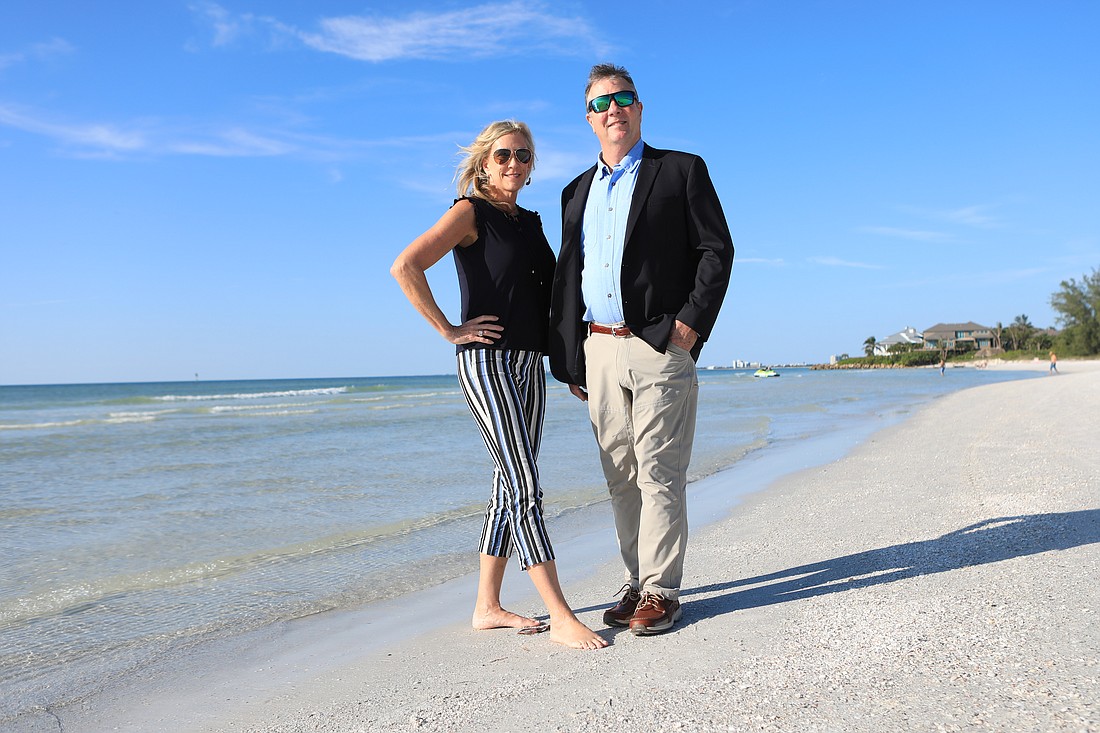- July 26, 2024
-
-
Loading

Loading

For the first 50 years or so of his life, no one would accuse retired construction executive Tim Hensey, 66, of being a beach bum. Hensey and his wife lived in rural east Sarasota for many years, raising two kids. They bought a house on Siesta Key in 2006, he says, when the kids were grown, to “live the island life.”
Hensey is now so enamored of the beach and island life that he’s a leader in a movement committed to implementing change in how most of Siesta Key’s 6,000 citizens are governed.
That change would be to turn the unincorporated portion of Siesta Key into a town, following a “government-lite” model. According to a feasibility study commissioned by Save Siesta Key, a nonprofit spearheading the movement, the model “limits government bureaucracy and taxing capacity and focuses on efficiently and effectively delivering services.” Under these parameters, the town of Siesta Key would have a council-manager form of government. There would be five elected council members — with one serving as ceremonial mayor — and an administrative manager. Currently, Siesta Key, the largest unincorporated barrier island in Florida, is governed by Sarasota County — save for a small part of the island, on the north end, which is part of the city of Sarasota.
Save Siesta Key leaders say the move to incorporation is the culmination of several factors, but none more important than the belief that county commissioners ignore their concerns. That’s especially true, says Tracy Jackson, vice-chair of Save Siesta Key, on votes related to growth and development, such as a trio of recently approved hotels on the key.
Those projects, combined with other decisions, will only exacerbate an already precarious traffic and infrastructure situation.
“We showed up at meetings and we spoke,” says Jackson. “But we are not being heard. The only way we can be heard is if we form our own town.”
“We are not anti-growth,” adds Hensey, who serves as chairperson for Save Siesta Key. “We are for smart growth.”
Several other groups and associations on the Key support incorporation, while a big one — Sarasota County — is officially neutral. “We don’t take a position on issues like this,” County Administrator Jonathan Lewis says. “They are county residents no matter what happens.”
This isn’t the first time Siesta Key residents have sought to declare independence from county government. Attempts in the 1960s and 1990s, which also stemmed from land-use decisions many Key residents fought against, failed to materialize.
And the current iteration of Save Siesta Key suffered a major setback in January 2022, when a Sarasota County legislative delegation of six state representatives and senators voted 3-3 on incorporation. A majority number of a local delegation must approve an incorporation proposal to move it to the next stage.
But the leaders of Save Siesta Key remain undeterred.
With some tweaks to its proposal and strategy, the group has its sights set on incorporation again — and 2023 promises to be a big year toward that goal. “Getting this on the ballot (in November) is our only mission in life,” says Jackson, a seven-year Key resident.
Incorporation has several steps. First, there’s the local delegation. Instead of six representatives, as in 2022, that group now consists of four elected officials due to redistricting. They are State Sen. Joe Gruters and State Reps. Fiona McFarland, James Buchanan and Michael Grant. All four are Republicans.
In a vote held Jan. 12, that group of four approved incorporation by a 3-1 vote. Buchanan was the lone no vote.
Next up the proposal goes to Tallahassee for a full Senate and House bill by the end of the 2023 legislative session, which is May 6. If approved there, it goes to Gov. Ron DeSantis, who has 30 days to sign it. If that happens, the proposal then goes to a referendum in a special election in November 2023 for all registered voters of unincorporated Siesta Key to vote yes or no. If yes, a vote for Siesta Key town council would be held in March 2024.
Save Siesta Key spent the weeks between Halloween and Christmas on a vital part of the revamped strategy: sending a straw poll to registered voters that asks the following question: Do you favor or do you not favor incorporation of Siesta Key?
The straw poll is partly a response to comments from elected officials who rejected the proposal in January 2022. Hensey, speaking a few days after Thanksgiving, was cautiously confident the straw poll would do well for the incorporation cause and be something positive to show the local delegation. He cites several petitions, Save Siesta Key website traffic and a December 2021 meeting packed with 500 supporters as proof positive.
“We are confident,” Hensey says, “that incorporation will be the will of the people.”